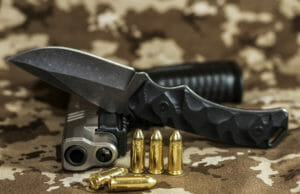
3 POSTS
Captain Valerie Walker started her aviation career in unconventional, adventurous ways full of interesting challenges. She was a flight instructor, police aerial patrol pilot in fixed wing and helicopters, DC-3 bush-pilot in Botswana, South Africa, Flight Test Pilot for Plane & Pilot and Air Progress magazines, plus various freelance aviation jobs. She was hired into Western Airlines’ first class to include a female airline pilot and many years later retired from Delta Airlines as a captain rated on the 727, 737, 757 and 767. Throughout her career she pursued her second passion in martial arts and continues to train, teach and hone that craft.
On March 8, 1976, I was hired into Western Airlines’ first class to include a female airline pilot. Martial arts and flying have always been my two passions. Martial arts had to be put on the back-burner as I put everything I had into aviation. I built my flying experience as a with less than reassuring equipment or procedural safety margins. In my teens and twenties, the military didn’t accept women as pilots, so my career path was unconventional, adventurous and full of interesting challenges that made me adaptable and able to think outside the box. Later, aviation blessed me with the resources to pursue a variety of martial arts disciplines, and I’ve done so for the last 35 years. I became a first-degree black belt in Kenpo Karate while continuing to train in Wing Chun, Jiu Jitsu, Aikido, Hapkido and Kendo. After 9/11, I was one of 40 airline pilots selected to be in the first class of Federal Flight Deck Officers. We trained with Special Forces instructors in hand-to-hand combat and firearm retention, as well as in law and shoot/don’t shoot scenarios. At that time, I began developing a combination of the best common principles and thought processes from all of my martial arts disciplines. My goal was to develop a 10-minute briefing for flight crews with no martial arts backgrounds yet who might encounter a terrorist situation. An airplane isn’t a politely scripted martial arts dojo. It’s a place where an unexpected real life-or-death situation can occur which requires us to be situationally aware and employ a few tools that are easily remembered; that don’t require a great deal of fine motor-skill finesse, and are good for fighting in the tight confines of a hollow tube that’s shooting through the air at Mach .82 with its tail on fire with no visible means of support and packed with panicked strangers.
I retired from Delta Airlines as a. I still teach martial arts, I still train, and I’m still always learning. If you can take away one or two things from this series of articles that help you live a longer, healthier, happier, more confident and safer life, you’ve already got a great head-start. As they say in black belt classes, “Better to know a few moves well, than many moves poorly.”
Enjoy and be safe in the air out there.




































































